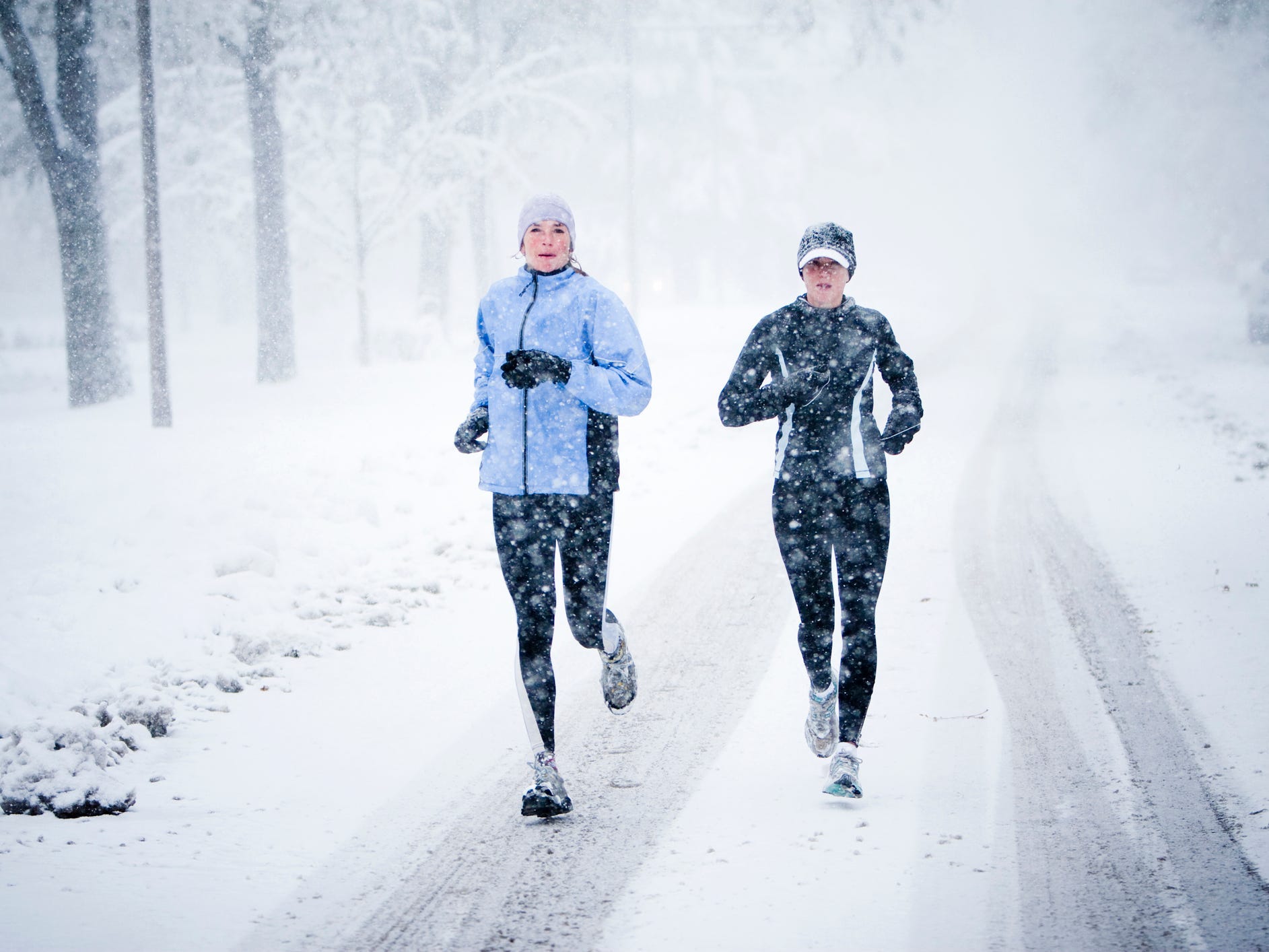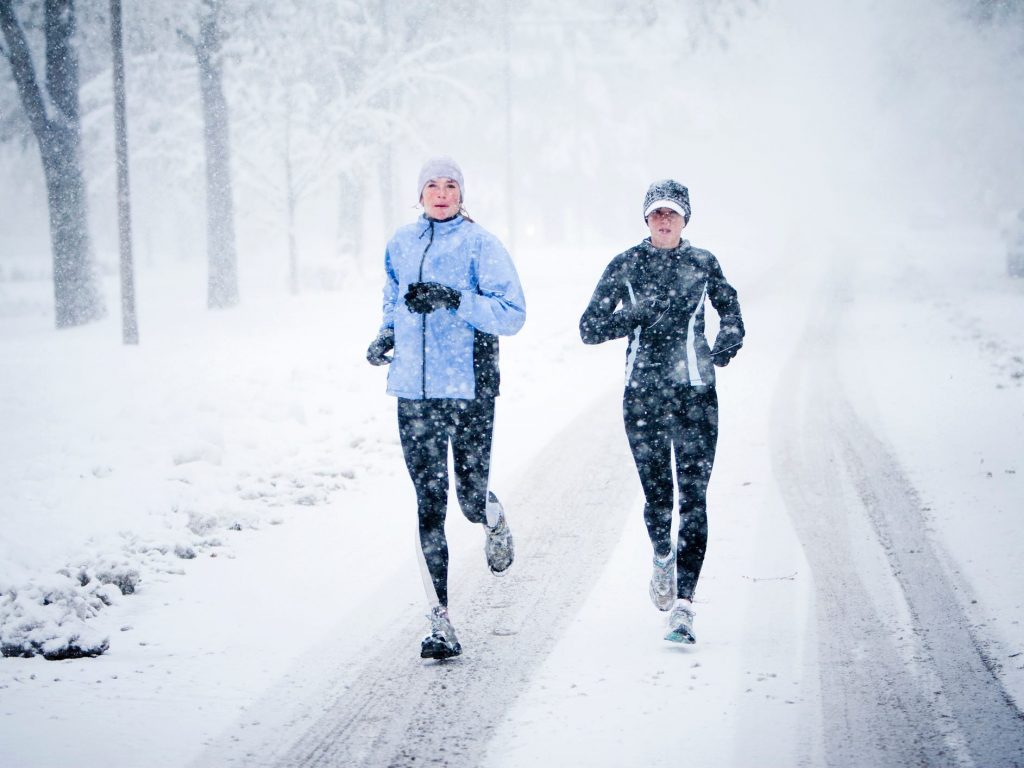
- You may burn more calories working out in cold weather than you would on a warm day, research suggests.
- However, it may not be an effective strategy to burn fat, according to an exercise scientist.
- The chill can prompt a change in hormones that control appetite, leading you to eat more afterward.
If you've ever shivered your way through a frigid morning jog, or taken a snowy post-feast walk over the holidays, you may have burned off a few extra calories than you would on a warm day, research suggests.
But that doesn't mean a cold weather workout is an effective strategy to lose fat. The cold can slow fat oxidization, leading you to burn less of it than you would in warmer workouts, according to Dr. Alexander Koch, professor of exercise science at Lenoir-Rhyne University. The chill can also stimulate hormones that ramp up appetite, which may lead to eating back those calories, he told Insider.
The end result is that you can certainly enjoy cold-weather running and winter sports as part of a fitness routine, but braving a wintery workout won't necessarily help you burn fat or lose weight.
Cold weather exercise may burn more calories, but leads to less fat loss
Evidence suggests that cold weather can boost the calorie-burning power of exercise because it takes energy just to keep the body warm, in addition to powering the exercise itself. One example is shivering, which is your body's way of using movement to generate heat as it adjusts to a chilly environment.
A study of hikers in Wyoming found that those who trekked in temperatures between 15-23 degrees Fahrenheit burned about 30% more calories than those who exercised when the weather was a balmier 50 degrees.
However, the extra calorie burn may not last, since exercise itself generates plenty of heat, particularly if you're bundled up, which means you won't need to shiver or otherwise exert more effort to keep warm.
There's also a trade off for using more energy in the cold: you may be burning less fat, some research suggests.
One small study found that men who cycled in temperatures between 50-70 degrees Fahrenheit burned more fat than when they performed the same exercise at -4 degrees Fahrenheit.
"This is likely due to vasoconstriction that occurs to conserve heat, lowering the rate of uptake of fatty acids into exercise muscle," Koch said.
In other words, colder weather causes the blood vessels to constrict, or get smaller, which limits how effectively the body can break down fat and transport the resulting fatty acids to the muscles for energy.
You'll likely be hungrier after a winter jog than in warmer weather
While exercise in the cold may expend a few more calories, it may not help a calorie deficit, since you're likely to eat more to make up for it, Koch said.
A 2017 review study found that exercising in weather below 32 degree Fahrenheit seemed to trigger a shift in hormones that control appetite. As a result, study participants ate between 44-84% more calories after exercising in cold environments than their peers who exercised in warm weather or simply rested.
Chilly workouts need a longer warm-up to prevent injury or lung irritation
Exercising in the cold can still be perfectly healthy, but if you choose to do it, it's especially important to warm up properly to reduce the risk of injury, Koch said.
"A warm up for exercise literally raises the body temperature which enhances mobility around joints and increases muscles' ability to extract oxygen from the blood," he said.
It'll also help you breathe easier during the workout, since a sudden inhale of cold, dry air can irritate the lungs.
